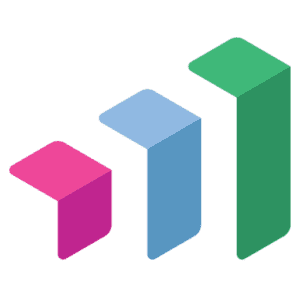Embracing Forecasting & Variance Analysis for Your Agency

Let’s be honest: forecasting is hard, and it only gets harder when you don’t have access to the up-to-date data that are essential to create a forward-looking perspective. But with a shared understanding of what was planned vs. what actually happened (i.e., variance analysis), agency leaders can start to better leverage performance insights to create more confident projections about future work – and the future of their organization.
Interested in learning how to leverage performance insights to inform forecasts? We got you. 👇
Table of Contents
- The Challenges of Agency Forecasting
- The Benefits of Agency Forecasting
- A Deep Dive on Variance Analysis
- Variance Analysis Best Practices
- Let’s Talk Forecasting
The Challenges of Agency Forecasting
Forecasting can feel daunting – even intimidating – for leaders. It’s like piecing together a complicated puzzle of where the business is heading and what services, resources, and team members are needed to support its future. Leaders need to do this while also maintaining a strong pulse on what work happened compared to what was planned. This requires having access to accurate, real-time insights about performance, which should then inform projections.
Unfortunately, many organizations today struggle with gathering, understanding, and acting on these insights if they’re working with homegrown tools or legacy technology, which are prone to human error and slow, manual processes. Making the process even more complex, leaders often attempt to make projections in a vacuum. They go into resourcing and forecasting meetings without up-to-date input from frontline workers – the ones closest to the work itself – so they miss out on knowing what it will truly take to tackle the work, the health of accounts, and potential opportunities to expand projects with new or more services.
With limited visibility into performance, it can be next to impossible for leaders to have confidence in their resourcing and forecasting decisions. From an operational standpoint, this tends to feel like the company is constantly “robbing Peter to pay Paul” just to get through each week, with no real forward-looking insights guiding leaders or their teams.
The Benefits of Agency Forecasting
There’s good news! It IS possible to reach a point where leaders no longer need to rely on gut instincts to make decisions. It all starts with measuring what actually matters, including metrics around revenue operations and variance analysis, to unlock the insights needed to enable active, strategic forecasting.
To get there, organization need to adopt the right best practices and leverage the right tools that can help smooth out and streamline the entire process. Not only does forecasting become easier, faster, and more accurate than ever, but organizations also gain:
- Improved resource allocation and utilization
- Greater accuracy in budgeting and financial planning
- Improved communication and collaboration across teams
- Greater transparency and accountability in business operations
A Deep Dive on Variance Analysis
Still wondering what variance analysis is, exactly, and why it’s so important for forecasting? In short, conducting a variance analysis shows what work actually happened against what was planned. It essentially helps leaders course correct in real time if needed and plan better next time.
Anyone in the services industry knows that plans change (and sometimes change drastically). That’s because we know the least at the beginning of every project. You might think a project will take 120 hours total, for example, but halfway through, you see that you’re already past 100 hours because the project’s needs required more time and resources than anticipated. Sound familiar?
Regularly tracking the variances in plans as they progress allows leaders to:
1. Course correct by pulling in more resources and discussing the expanded scope and budget with the client.
Ongoing monitoring allows leaders to more easily see when things are going off the track so they can fix it sooner than later with 1) more or different resources or 2) a reset with the client. This isn’t just an hours or budget issue, however – there’s a human component to consider as well. Teams might feel like they’re struggling from the onset of a project if it requires more time from them than they have to give or expected to give. If leaders don’t catch this early and provide adequate support, it can easily lead to frustrated teams and snowball into burnout. Conversely, when they do catch it and address it, people feel empowered—they have a voice in how the project could and should look moving forward, and they feel appreciative to have new opportunities to solve problems and make life easier for everyone.
2. Better understand future project needs before they start.
Variance analysis should be used as a communication tool, helping to inform leaders and their teams on what actually goes into projects – the hours, the resources, potential hiccups that impact timing, and so on. It’s an improvement tool that allows everyone to understand how to plan better for a similar engagement down the road, ultimately helping to reduce variances over time.
Variance Analysis Best Practices
1. Delegate to the frontline.
Don’t forget about the importance of frontline insights. Encourage your account and project managers to update their resource plans at least once a week so leaders have an accurate view into the health of projects. Leaders should also ask their team leads and resource managers to forecast active projects and pipeline opportunities so they can collaborate and address gaps and conflicts proactively in the forecast.
Forecasting is a team sport, and we recommend treating it as such. 🤝
2. Look for low variance in your analysis once a week.
Variance analysis should not happen at the end of a project when there’s no ability to change what happened and when recency bias has set in. If project managers check in on the variance of projects on a regular basis, however, they can coordinate with leaders who can provide coaching on how to adjust things as needed in real time. This also helps leaders better forecast resourcing needs for future work.
Specifically, we recommend having project managers or team leads track the difference between planned and actual revenue and utilization at least once a week. If there’s a high variance, they can then pull in the leadership team to help right-size resources and smooth things over with the client, if needed. And we definitely recommend approaching projects in fractional weeks (ie., duration-based planning) rather than hours per task. This helps teams deliver more value to clients and helps resource managers more easily visualize resource allocation without getting bogged down by granular details.
Let’s Talk Forecasting
When you better understand how current work is performing, you can better forecast resource needs for future work. That’s what variance analysis and active forecasting is in the simplest of terms. Yet, we know these best practices don’t always feel simple.
The agency and services world can be hectic (that’s why we love it, right?), but we’re here to help. We love talking agency forecasting at Parallax—it’s kinda our thing. So, if you’re looking to learn more about forecasting and variance analysis for your agency, let’s connect.


